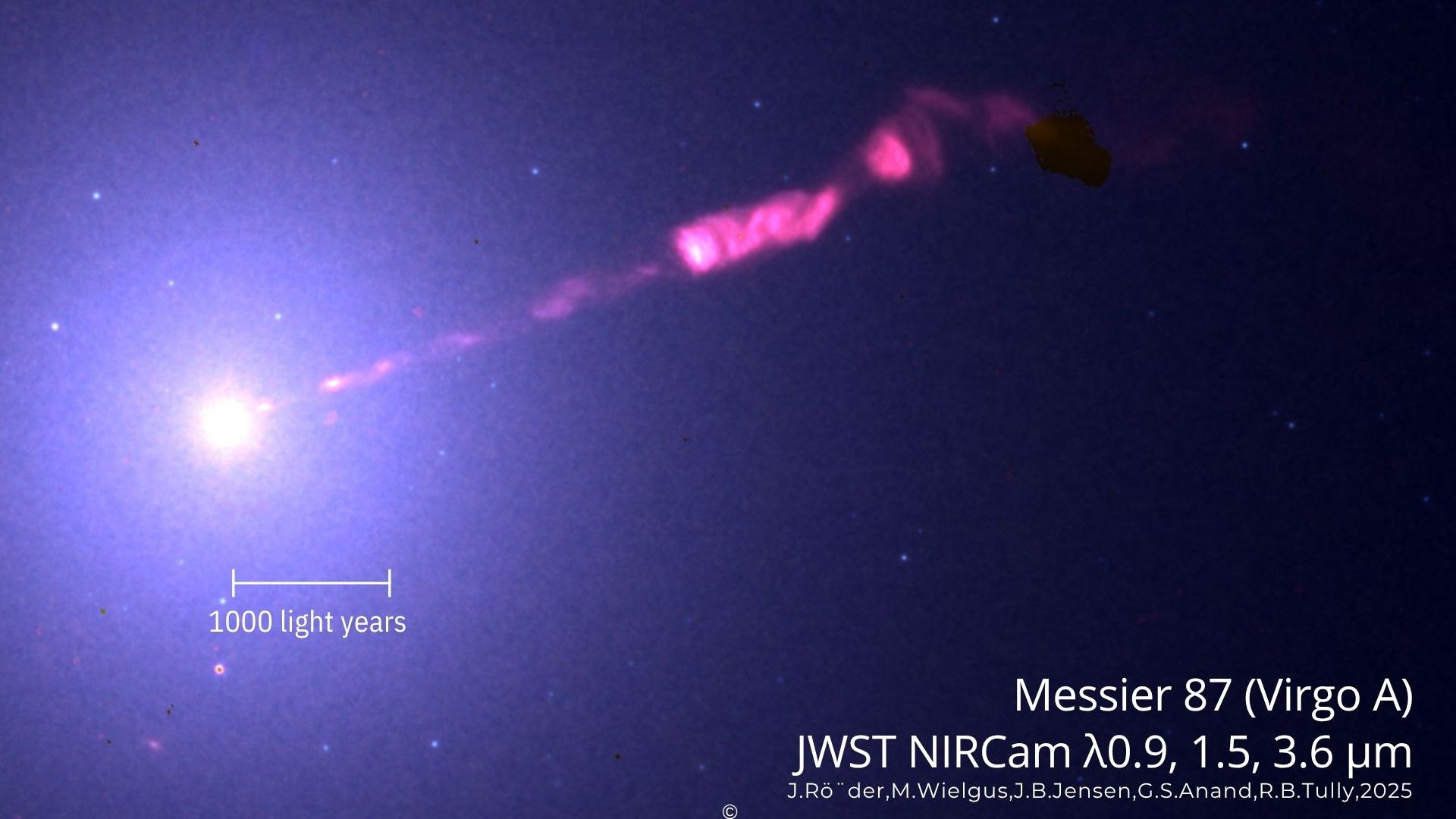🔭 James Webb captures the twin jet from M87 galaxy's black hole
Follow us on Google News (click on ☆)
This observation reveals unprecedented details about the jet propelled by the central black hole, including the detection of its elusive twin extending in the opposite direction. The captured image shows a bright pink ribbon unfolding against a nebulous violet background, with bright knots marking areas where particles reach speeds close to that of light.

The James Webb Telescope reveals M87's jet (pink) extending against a violet background, with knots, twists, and even a faint counter-jet emanating from the galactic black hole.
Credit: Jan Röder, Maciek Wielgus et al., Astronomy & Astrophysics (2025)
For the first time in infrared light, Webb has captured the counter-jet located about 6,000 light-years from the black hole. This structure appears extremely faint and difficult to detect because it's moving away from us at a speed close to that of light, making its radiation more discreet. The M87 galaxy, located 55 million light-years away and discovered by Charles Messier in the 18th century, hosts the supermassive black hole M87* at its center, made famous in 2019 by its first direct "photograph."
The research team led by Jan Röder used Webb's NIRCam instrument to image the jet in four different infrared bands. By meticulously subtracting the light from stars, dust, and background galaxies, scientists obtained the most detailed infrared portrait ever made of M87's outflow. Near the galactic nucleus, the jet takes on a helical shape with complex structures revealing particle dynamics.
The new data confirm that the jet shines through synchrotron radiation, a type of light emitted by charged particles spiraling in magnetic fields. By analyzing subtle color variations across different infrared bands, the team was able to trace how particles accelerate, cool, and twist along the jet. These observations provide valuable information about the extreme physical processes occurring near supermassive black holes.
These cosmic jets serve as natural laboratories for studying the physics of the most extreme environments in the Universe. Propelled by the energy of supermassive black holes, they can accelerate particles to energies far greater than those we can produce on Earth. Understanding these phenomena helps astronomers unravel the mysteries of how black holes influence their host galaxies and the distribution of matter in intergalactic space.
Synchrotron radiation
Synchrotron radiation is a special type of light emitted when charged particles, such as electrons, move at relativistic speeds in a magnetic field. Unlike thermal light produced by heat, this radiation results from the acceleration of particles following curved trajectories under the influence of magnetic forces.
This phenomenon occurs naturally in space around extreme astrophysical objects like black holes, but it is also reproduced on Earth in specialized facilities called... synchrotrons. These large scientific instruments allow researchers to study the structure of matter at atomic and molecular scales using this intense radiation.
In the case of M87's jet, synchrotron radiation enables astronomers to map the structure of magnetic fields and understand how energy is transferred from the black hole to the jet. The color and intensity of this light provide information about particle speeds and the strength of magnetic fields present.
Studying this radiation across different spectral domains, from infrared to X-rays, offers a comprehensive view of particle acceleration processes in the Universe, revealing details impossible to observe with other methods.